Damnatio Coinage and Portraiture
of Gaius Caligula and Other Julio Claudians
By Joe Geranio
Coins in sanctuaries: Note Caligulan coinage.
In
a numismatic seminar held at U.C. Berkeley on coins in sanctuaries, R.
Stroud found further proof of demonetization. Speaking on Roman coins
found in the sanctuary of Demeter at Corinth, Stroud listed similar
results:
On Corinthian Duoviri Coins:
Reign of Augustus............ 12
Augustus/Tiberius............ 4
Caligula.......................... 0
Claudius......................... 1
Nero.............................. 2
Galba............................. 7
On Roman Imperial Coins:
Julius Caesar.......................1
Augustus............................3
Tiberius..............................1
Caligula..............................0
Claudius.............................1
Nero..................................1 (note 12)
There
is still, however, no clear consensus on whether demonetization was
carried out. An immediate and total recall would hardly have been
practical, since there was no de facto damnatio. On the other hand, Claudius may have wanted, most likely for personal reasons, to erase any memory of the hated Emperor.
Here are some photos of attempted Damnatio on the coinage of Caligula. (my opinion)
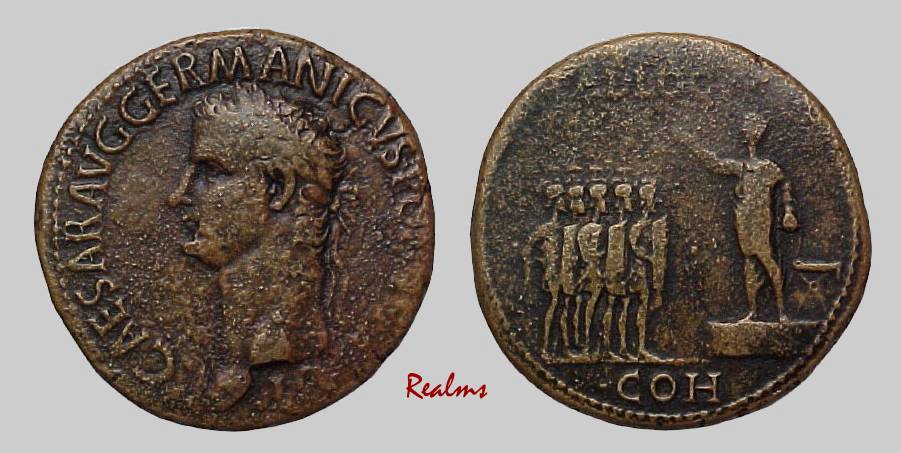
A Caligula sestertius with the 'C ' in "C CAESAR" having been filed away in ancient times. (Gary photo)
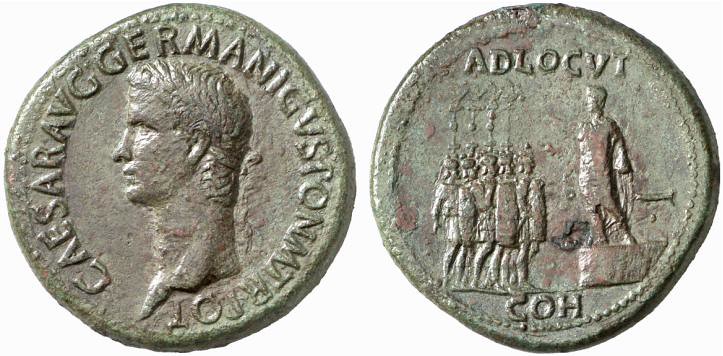
A Caligula sestertius with the 'C ' in "C CAESAR" having been filed away in ancient times.

Scratches across reverse - damnatio?

A Caligula sestertius with the 'C ' in "C CAESAR" having
been filed away in ancient times. The seller does not mention this in
the description, its odd, but I look at the "C" in all Caligula 's AE 's
first thing. I am now after not documenting for the first 15 years,
adding them as I find them.
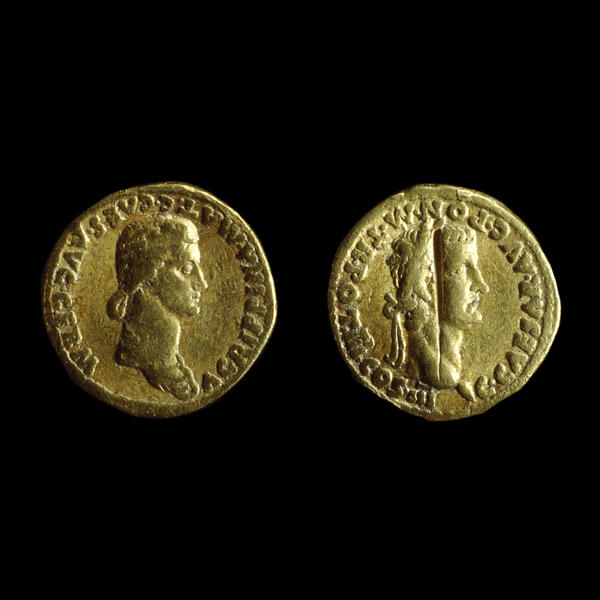
Agrippina and Caligula- Was this coin defaced or was someone checking the gold content?
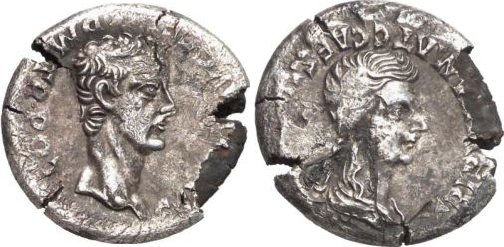
Caligula, 37 - 41 n. Chr. Denar (3,54 g.), 37 - 38 n. Chr.
Mzst. unbekannt. Vs.: C CAESAR AVG GERM P M TR POT, Kopf des Gaius n. r.
Rs.: AGRIPPINA MAT C CAES AVG GERM, drapierte Büste der Agrippina n. r.
RIC vgl. 8. Subärat, inoffizielle Prägung! (pressed Lipanoff Forgery)

The
obverse of a Caligula 'Vesta ' AS with the 'C ' in the inscription having
been filed away in ancient times. (Gary photo) I have seen more of the
Caligula Vesta bronze types with the chiseled "C" in "C CAESAR" than
any other form of damnatio on Caligula ' bronzes. I have seen at least
20 Vesta bronzes that have damnatio damange like this at coin shows. It
probably helps I am looking for the Damnatio on Caligula 's bronzes. No
other Julio Claudian princeps has the number of damnatio attempts as
Caligula. Nero should also have similar damnatio attempts, but in my
research I do not see them. Neronian damnatio attempts seem to be on
monuments and inscriptions but not so on coins. Nero needs further
study in damnatio attempts in regards to numismatics.
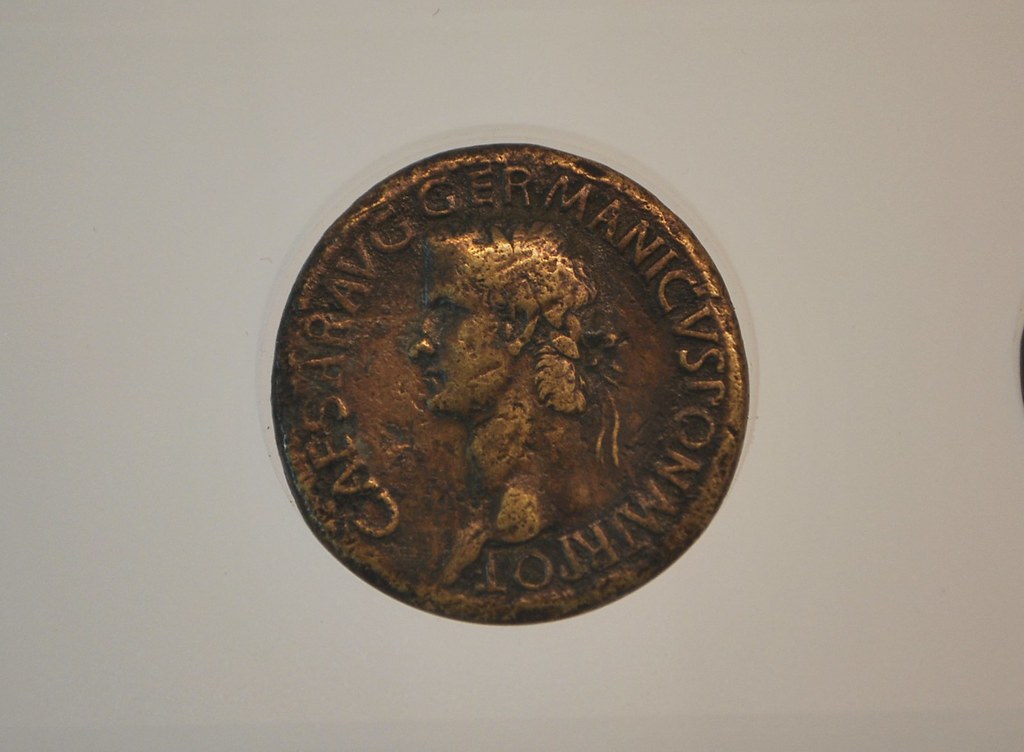
Here
is a damnatio sestertius of Caligula I just ran across today, again the
seller has no idea, but this seem to be the pattern and choice in the
first century of damnatio of Caligula coins. Chisel off the first "C"
in "C CAESAR". Of the 45-60 coins I have seen over 80% are exactly
like this. I 'm a little obsessed with Caligula coins, so I have noticed
over the last 25 years.

Nero and Drusus Caesar dupondius (struck under Caligula) with "C" in "C CAESAR" obliterated. (photo by Gary).
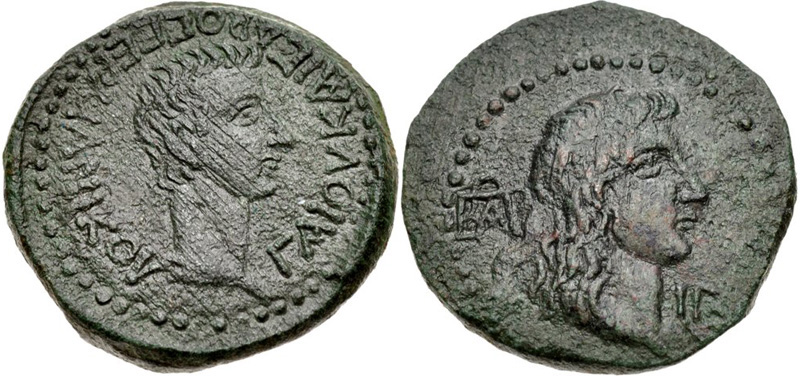
Note scratches on face of Caligula? Defacement? KINGS of BOSPORUS. Aspurgus, with Gaius (Caligula). AD
14/5-37/8. Æ 12 Units (24mm, 11.06 g, 12h). Bare head of Caligula right
/ Diademed head of Aspurgus right; monogram to left, IB (mark of value)
to right. MacDonald 302; Anokhin 319; RPC I 1903. cngcoins.com
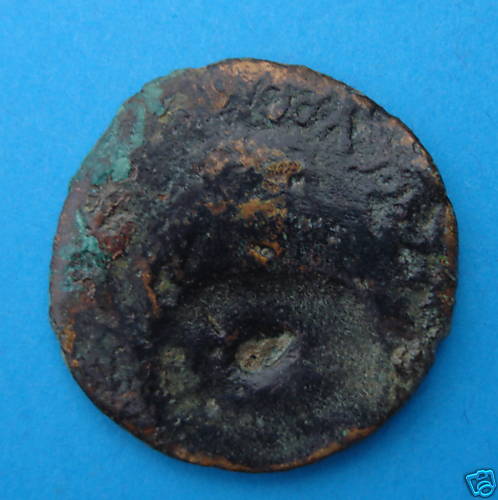
Caligula from Carthago Nova. Puncture mark in neck.
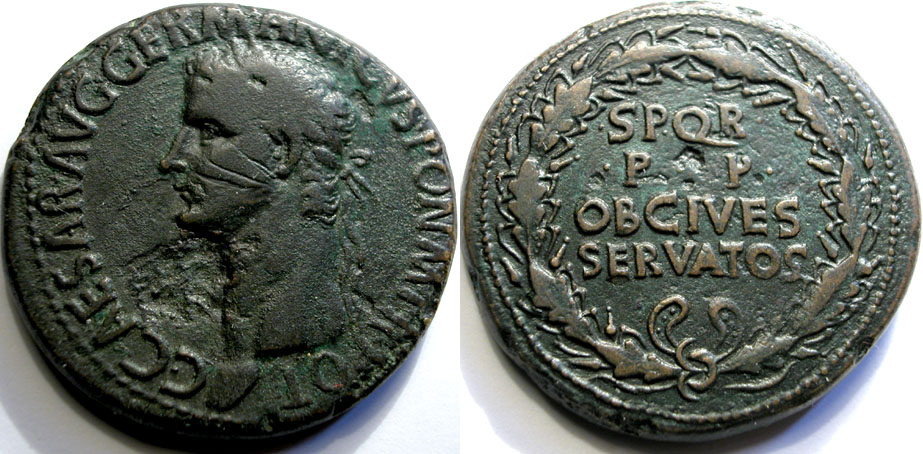
Note the defacement across the face by the ear and nose. 4 slashes across face?
Caligula AE sestertius. Struck 37-38 AD.
Obverse: C CAESAR AVG GERMANICVS PON M TR POT, laureate head left.
Reverse: S P Q R/P P/OB CIVES/SERVATOS in four lines within oak wreath.
RIC 37; BMCRE 38; Cohen 24.
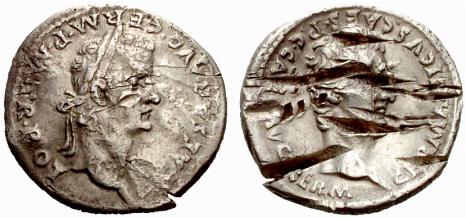
A wonderful obliterated coin with his father Germanicus defaced badly.
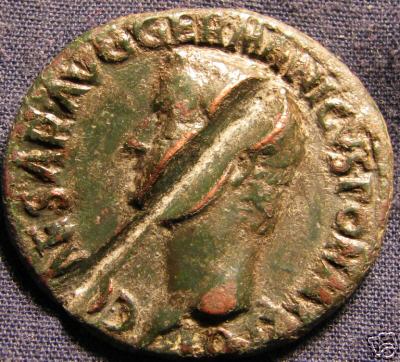
Caligula Vesta AS with gash attempt to Damnatio of "C" in Caesar and face.
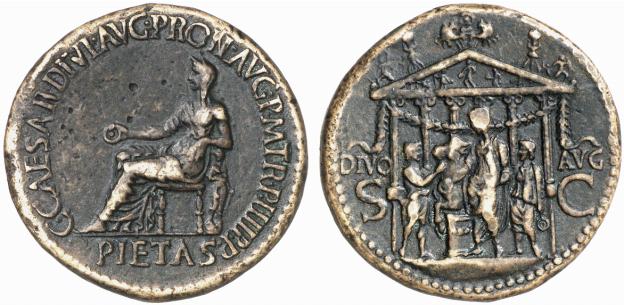
This
coin is defaced and is evidence of the unpopularity of Gaius Caligula.
On some Vesta bronzes you will find the "C" in CAESAR obliterated. On
this coin (Caligula in front of the Temple of DIVO AUGUSTUS sacrificing)
the face has been obliterated and it was not mentioned in the catalog.
The date of 41 A.D. seems to show more damnatio damage than years 37-40
A.D. on Caligulan imperial coinage? Joe Geranio
Gaius
(Caligula). AD 37-41. Æ "Medallic" Sestertius (30.30 g, 7h). Rome mint.
Struck AD 37-38. Pietas seated left, holding patera and resting arm on
small draped figure standing facing on basis / Gaius standing left,
holding patera over garlanded altar; victimarius holding bull for
sacrifice and attendant holding a patera standing on either side;
garlanded hexastyle temple of Divus Augustus in background; pediment
decorated with sacrificial scene; quadriga and Victories as acroteria;
statues of Romulus and Aeneas along roof line. RIC I 36.
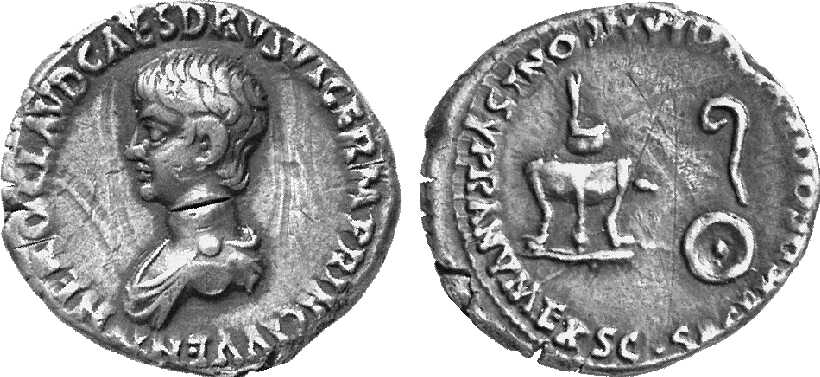
Youthful Nero with Neck Damnatio?

The Senate nonetheless rejoiced at the death of Domitian, and
immediately following Nerva 's accession as Emperor, passed damnatio
memoriae on his memory: his coins and statues were melted, his arches
were torn down and his name was erased from all.
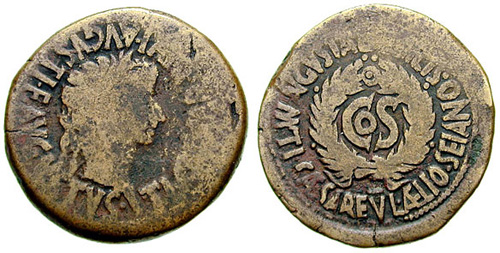
Sejanus inscription on reverse not obliterated: See at 4 oclock: L. AELIO. Sejano
SPAIN, Bilbilis. Tiberius.
14-37 AD. Æ 27mm (10.84 g, 6h). L. Aelius Sejanus, praetorian consul.
Struck 31 AD. Laureate head right / MV (ligate) AV(ligate)GVSTA BILBILIS
TI CÆSARE V [L ÆL]IO [SEIAN]O, large COS across field within wreath.
RPC I 398; SNG Copenhagen 620.
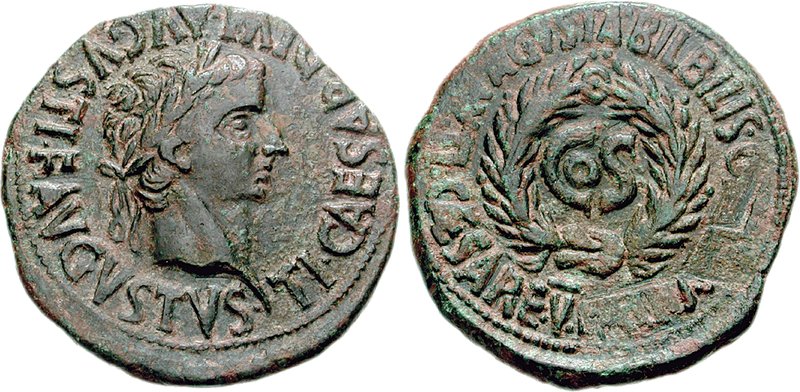
Now at 4 oclok you can see name of the dreaded Sejanus has been obliterated on this specimen.
SPAIN, Bilbilis. Tiberius. 14-37 AD. Æ 27mm (10.84 g,
6h). L. Aelius Sejanus, praetorian consul. Struck 31 AD. Laureate head
right / MV (ligate) AV(ligate)GVSTA BILBILIS TI CÆSARE V [L ÆL]IO
[SEIAN]O, large COS across field within wreath. RPC I 398; SNG
Copenhagen 620. Important historical type with the name of Sejanus
removed in damnatio memoriae.
Lucius Aelius Sejanus came from an up-and-coming
equestrian family. He was the son of
Lucius Seius Strabo,
Tiberius '
praefectus praetorio;
his brother,
Lucius Seius Turbo was suffect
consul in 18 AD; and he
could claim kinship through his mother to Maecenas,
Augustus ' advisor.
Early in his career,
Sejanus served with
Augustus ' grandson Gaius in the
east, and may have accompanied
Drusus Caesar north to quell the
mutinies which broke out upon
Augustus ' death. Initially he had been his
father 's colleague as
praefectus praetorio, but when Strabo had been promoted to the more prestigious post of
praefectus Aegypti,
Sejanus retained sole command of the Guard,
a post which, according to
later historians, he used to his advantage. Consolidating them in a
permanent encampment at the eastern edge of the city, he used the Guard
to increase his power and influence over
Tiberius. In 23 AD, upon the
death of
Drusus Caesar,
Sejanus proposed marrying
Drusus ' widow
Livilla,
with whom he was allegedly having an affair. So indispensable had he
become in maintaining order in the capital that
Tiberius called him "the
partner of my labors," a position which
Sejanus carefully cultivated
upon the emperor 's retirement to Capri in 26 AD. Using the emperor 's
absence to his advantage,
Sejanus imprisoned
Germanicus ' widow,
Agrippina Senior, her sons
Nero and
Drusus Caesars, and their supporters
on charges of treason. In 31 AD
Sejanus was
consul with
Tiberius the
first step, he hoped, to acquiring tribunician power and becoming the
imperial heir. At the height of this power, however,
Sejanus fell, when
Tiberius, made aware of
Sejanus ' machinations, condemned his consular
colleague in a letter to the Senate. Harsh reprisals against
Sejanus and
his adherents followed, including the removal of his name from public
monuments as well as this coin.
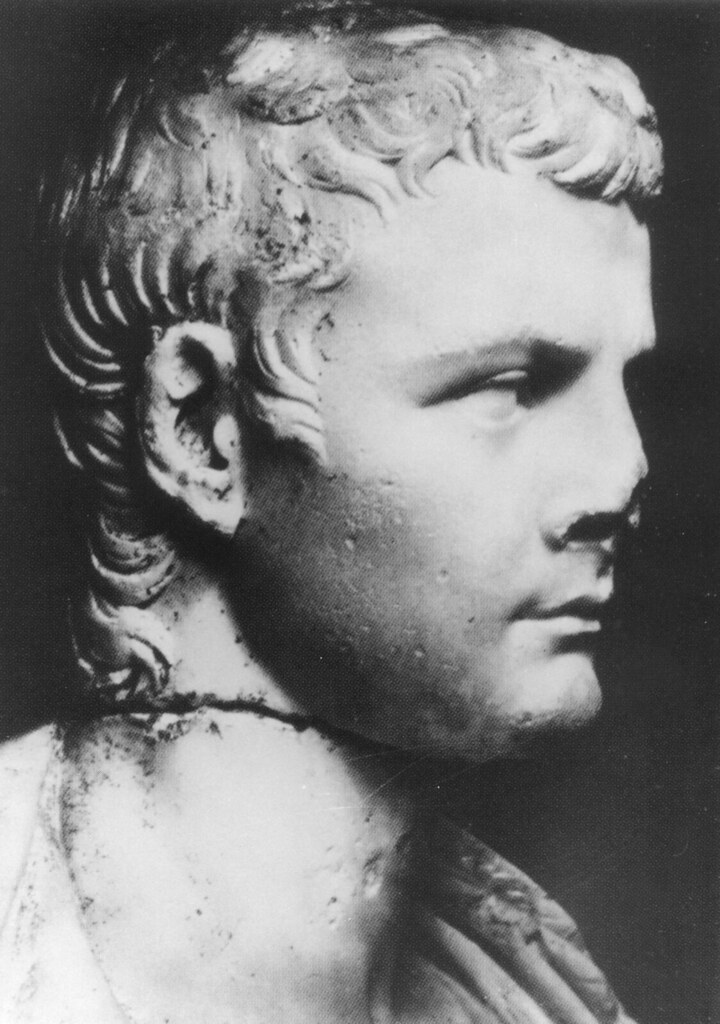
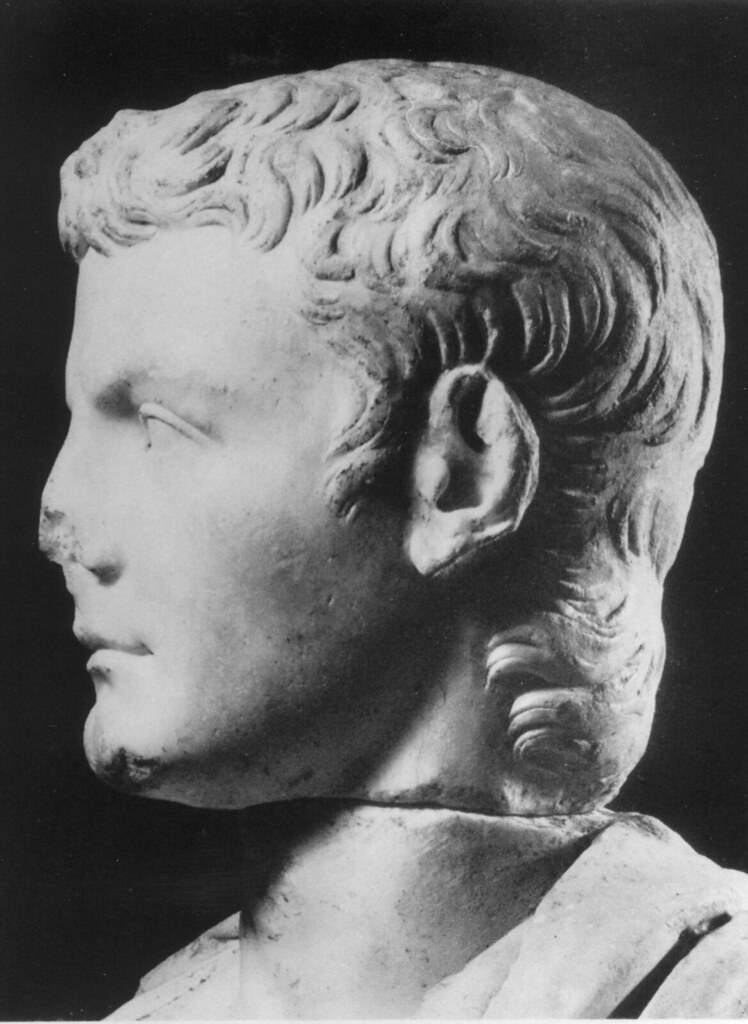
Note Damnatio attempt!! Even rarer are head and body belonging together. Photo courtesy John Pollini.
Statue of Caligula
Roman, A.D. 38-41
Marble
80
by 26 1/2 by 19 1/2 inches. This is an actual Damnatio attempt that
was not originally successful? Since the head and body belong together,
the break was attempted, and thankfully the head and body survived.
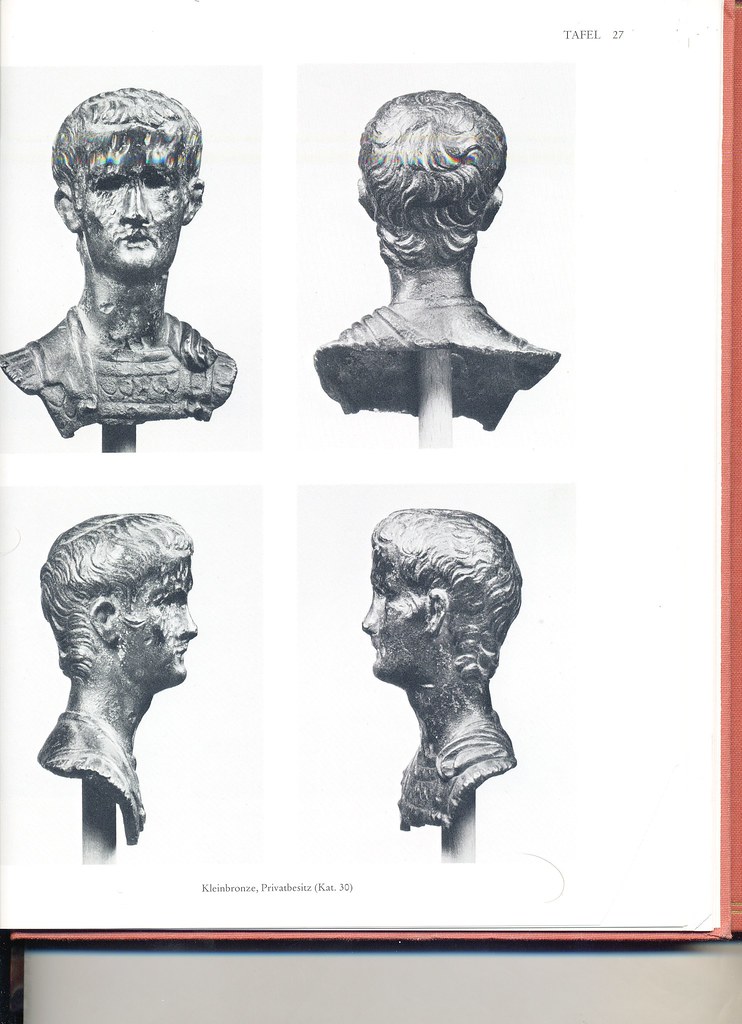
Bronze portrait of Caligula that was found in the Tiber river. Note: Mutilated face on Caligula.
From: Die Bildnisse des Caligula, (1989) Boschung, D. Educational Use Guidelines.
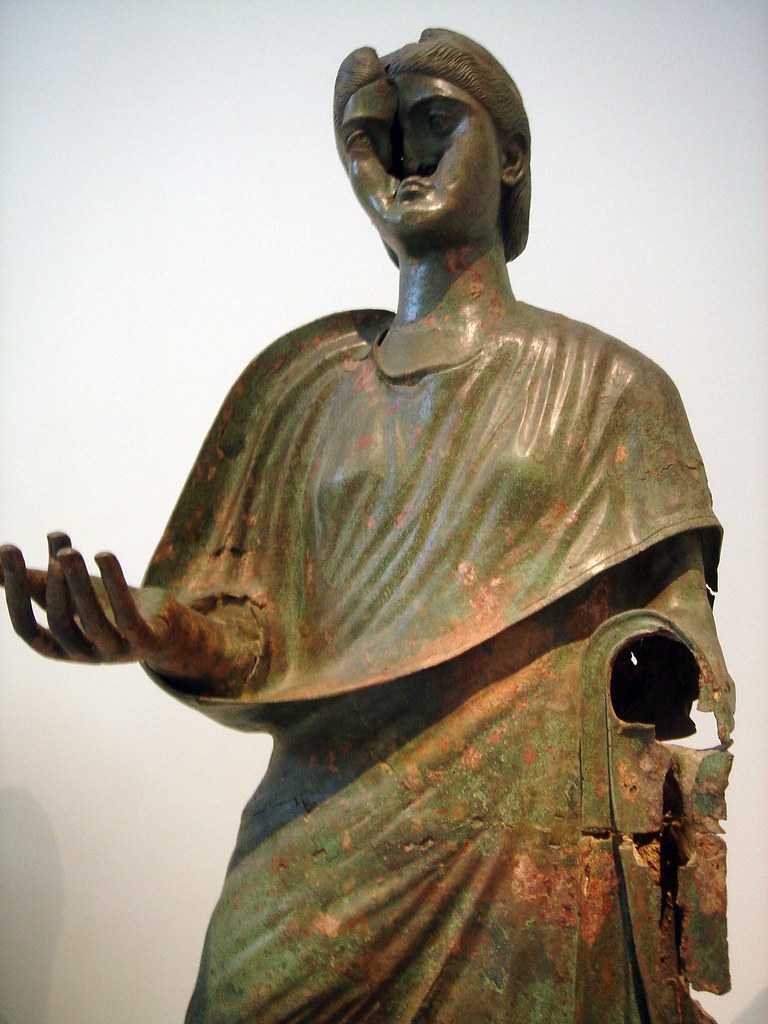
This is not Julio Claudian, but talk about Damnatio Memoriae!! Wow! Bronze statue of Empress Julia Aquila Severa
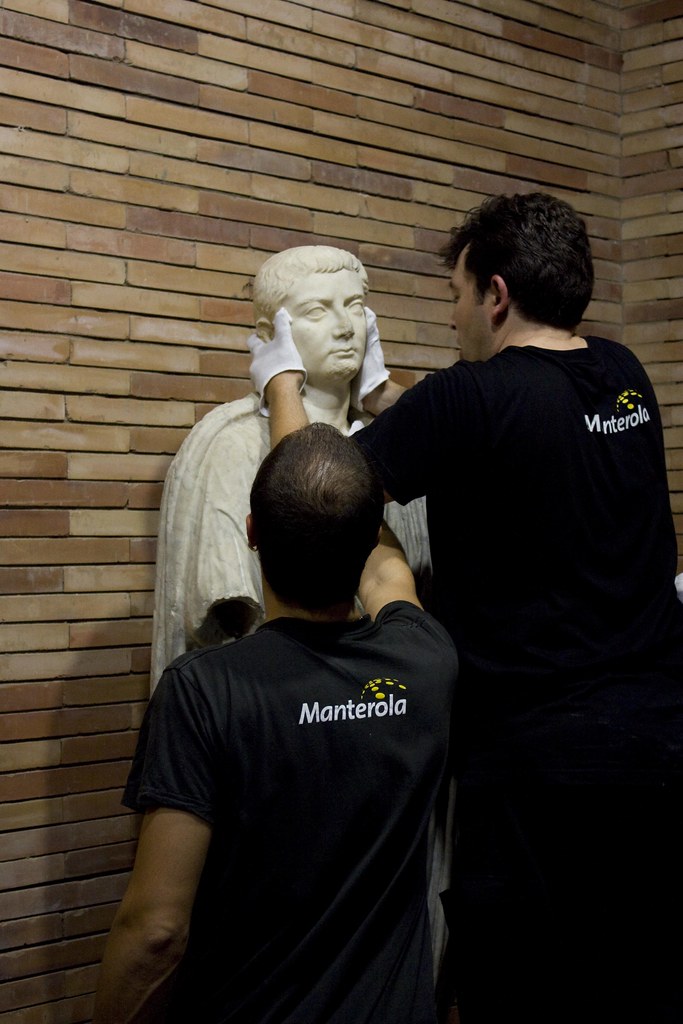
Modern day Damnatio!! Drusus ' head removed from a statue. Merida, Spain.

Statue after Head of Drusus is removed. (Merida , Spain)
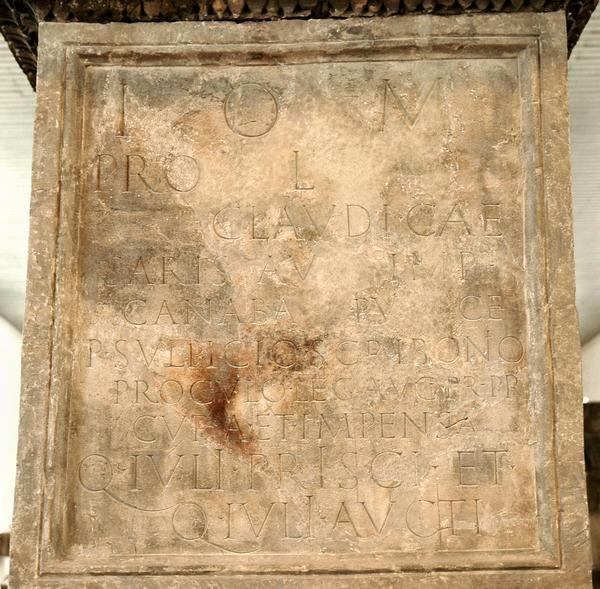
Iovi Optimo Maximo
PRO SALVTE NERO-
NIS CLAVDI CAE-
SARIS AVGusti IMPeratoris
CANABARI PVBLICE
Pvblio SVLPICIO SCRIBONIO
PROCVLO LEGato AVGvsti PRo PRaetore
CVRA ET IMPENSA
Qvinti IVLI PRISCI ET
Qvinti IVLI AVETI | To Jupiter, greatest and best,
for the health of Nero
Claudius Cae-
sar Augustus, imperator,
by the cannabae community.
Publius Sulpicius Scribonius
Proculus was governor.
Made and paid for by
Quintus Julius Priscus and
Quintus Julius Avetus |
The red shows where Nero 's name was erased
Joe Geranio- Julio Claudian Iconographic Association

































